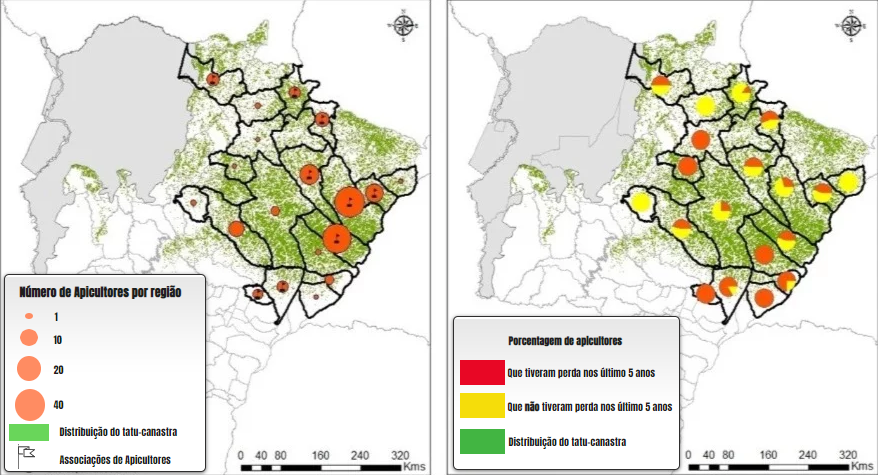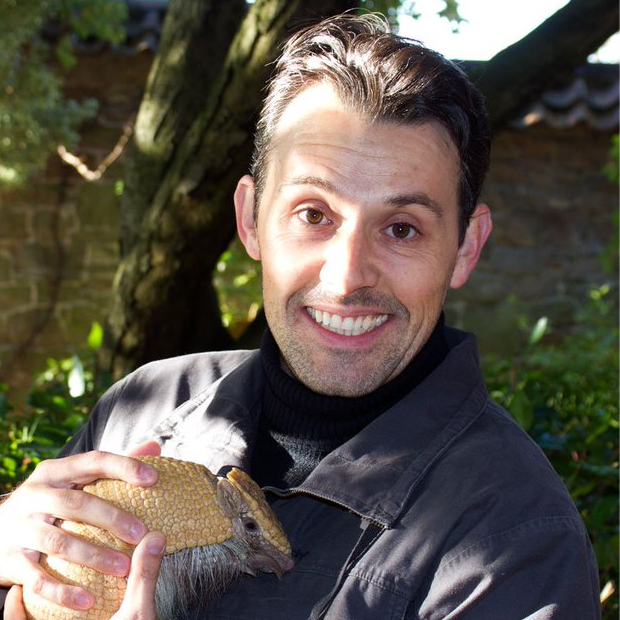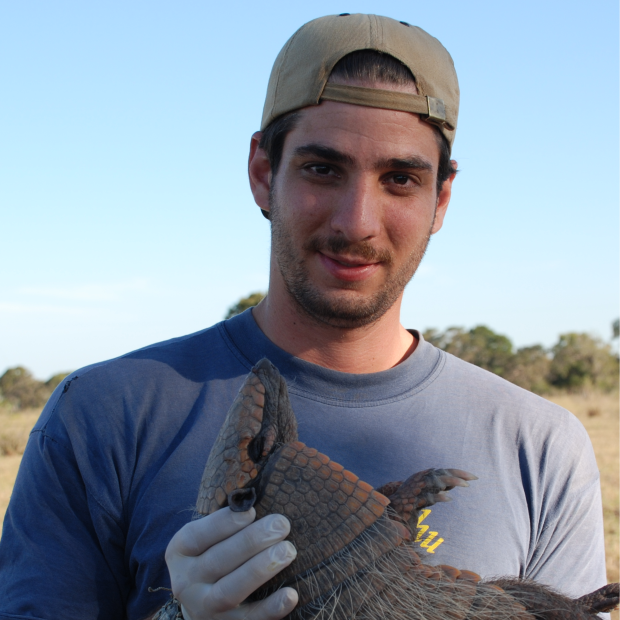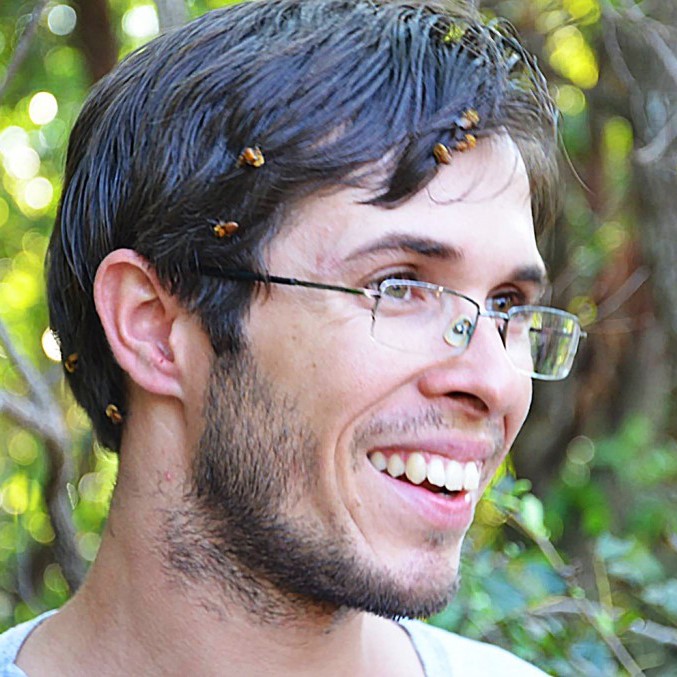
The Armadillos and Honey Project was created in 2015, as complementary to research mapping the occurrence of giant armadillos in the Cerrado of Mato Grosso do Sul, Brazil.
The study period ended in 2018, and its results are available in the Guide for Coexistence between Beekeepers and Giant Armadillos in the Cerrado of Mato Grosso do Sul (Guia de Convivência entre Apicultores e Tatus-canastra no Cerrado do Mato Grosso do Sul).
Giant armadillo specialists went to the Cerrado of Mato Grosso do Sul for an initial survey on the presence of this animal (or lack thereof) in 500 watersheds with fragments of native vegetation.
They interacted with over a thousand farmers and rural producers to obtain permission and access to private land. They also contacted beekeepers, concerned about giant armadillos toppling and destroying beehives.
Many beekeepers place their hives near the last fragments of native Cerrado vegetation to guarantee the production of wild honey. Unfortunately, these are the same spaces used by giant armadillos for their survival.
Giant armadillos essentially feed on termites and ants. However, the availability of termite mounds and anthills in Cerrado fragments is low. Consequently, they resort to beehives, in search of bee larvae.
When talking with beekeepers in the Cerrado of Mato Grosso do Sul (MS) about the damage caused by giant armadillos, our wildlife specialists started a complementary research project.
The objective, this time, was to understand when and why giant armadillos attack beehives and how to avoid damage to these hives.
Conflicts between humans and wildlife are common around the world. The most frequent conflicts involve felines (or other carnivores) and livestock, such as cattle, sheep, and poultry. However, there may also be damage to crops, caused by wild pigs and monkeys.

In the case of the Cerrado in MS, with the collaboration of 10 beekeeper associations, the researchers mapped out 178 apiaries. In all, 73% had experienced damage caused by giant armadillos in the last 5 years, and 46% in the last year.
In some apiaries, the specialists installed motion-triggered cameras. They were able to observe the behavior of giant armadillos and other wild animals, which occasionally approached the destroyed beehive boxes.
With images of giant armadillos recorded in the apiaries and immense contributions from beekeepers, several measures to avoid damage to the hives were evaluated regarding their efficiency, cost, and ease of installation/operation. Placing the beehives out of the reach of giant armadillos is the best way to promote their peaceful coexistence with beekeepers.
This can be done by building fences around the entirety of the apiary or by using tall, solid trestles/stands, with the beehives containing honey, bees, and bee larvae on top. The description of the various measures evaluated, their pros and cons, is in the Possible Solutions section on this website, as well as in the Guide for Coexistence between Beekeepers and Giant Armadillos in the Cerrado of Mato Grosso do Sul (Guia de Convivência entre Apicultores e Tatus-canastra no Cerrado do Mato Grosso do Sul), available below.

Em conjunto com apicultores, estão sendo desenvolvidoa novas práticas para proteger as colmeias de ataques do tatu-canastra e ao adotar estas medidas, todos os produtos (mel e derivados) desta propriedade receberão um selo de certificação, “Produtor amigo do tatu-canastra”. Assim, apicultores serão beneficiados e se tornarão protetores do nosso gigante da biodiversidade.

He works in the fields of Conservation Biology, the research and ecology of species, and the use of natural resources. He has worked and lived in Belize, Argentina, Bolivia…
He works in the fields of Conservation Biology, the research and ecology of species, and the use of natural resources. He has worked and lived in Belize, Argentina, Bolivia, Nepal, and has now been in Brazil for the last 20 years. In 2002, he came to live and work in Mato Grosso do Sul, where he founded the NGO ICAS to provide administrative support for the two projects he coordinates: the Giant Armadillo Conservation Program and the Anteaters and Highways Project. His work has been featured on National Geographic, BBC Nature, and PBS (Public Broadcasting Service). Arnaud is recognized as an important figure in world conservation, having been honored with the Whitley Award in 2015, considered to be the Oscar of Conservation!

Médico Veterinário graduado pela Universidade Paulista (2003), possui experiência em Medicina de Animais Selvagens, Medicina da Conservação e…
Médico Veterinário graduado pela Universidade Paulista (2003), possui experiência em Medicina de Animais Selvagens, Medicina da Conservação e pós-graduação latu sensu em clínica e cirurgia de animais selvagens.
Atuação: Desde 2004, atua como pesquisador em projetos de conservação com foco em mamíferos neotropicais. Desde 2011, é veterinário do Projeto Tatu-Canastra, Mestre em Ciências pelo Instituto de Medicina Tropical da Universidade de São Paulo e pesquisador associado do Zoológico de Naples, Flórida, EUA.

Graduado pela Universidade Federal da Grande Dourado (2009). Realizou estágios curriculares e extra-curriculares em projetos de conservação com experiência em captura…
Graduado pela Universidade Federal da Grande Dourado (2009). Realizou estágios curriculares e extra-curriculares em projetos de conservação com experiência em captura, manejo, monitoramento e conservação de animais selvagens, com foco em Xenarthras. Desde 2012, é membro do Projeto Tatu-Canastra e desde 2013 atua como pesquisador associado do Instituto de Pesquisas Ecológicas - IPÊ e do Zoológico de Houston, Texas, EUA

Bachelor’s in Biological Sciences from Mato Grosso do Sul State University (UEMS), Master’s in Animal Biology from the Federal University of Mato Grosso do Sul (UFMS), and a specialization in Beekeeping and Meliponiculture through the University of Taubaté (UNITAU).
Bachelor’s in Biological Sciences from Mato Grosso do Sul State University (UEMS), Master’s in Animal Biology from the Federal University of Mato Grosso do Sul (UFMS), and a specialization in Beekeeping and Meliponiculture through the University of Taubaté (UNITAU).
He maintains apiaries to produce honey and meliponaries to produce stingless bee colonies native to Mato Grosso do Sul. He also works with environmental education, consulting, and technical assistance in beekeeping and meliponiculture. He has experience in using non-lethal mitigation measures to prevent the predation of beehives by giant armadillos and currently coordinates the Armadillos and Honey project.

Veterinarian specialized in wild animals with a degree from the University of São Paulo (USP) received in 1985. He has worked in Environmental Education as one of his main areas of focus within conservation projects.
Veterinarian specialized in wild animals with a degree from the University of São Paulo (USP) received in 1985. He has worked in Environmental Education as one of his main areas of focus within conservation projects. Designing and drawing from nature has always been a valuable tool for better developing this work. He came to Mato Grosso do Sul as part of the team that created the ecotourism project known today as Caiman, in the Pantanal of Miranda, MS. There, he collaborated with the Hyacinth Macaw Project (Projeto Arara Azul) and since then has sought to collaborate with other conservation initiatives through his designs. He currently lives in Bonito, MS, where he runs Studio Muriqui, his creative atelier.

Graduada em Ciências Econômicas pela Universidade Paris X e em Marketing & Gestão pelo Programa de MBA da Reims Business School, atuou como Coordenadora de Projetos & Comunicação durante…
Graduada em Ciências Econômicas pela Universidade Paris X e em Marketing & Gestão pelo Programa de MBA da Reims Business School.
Atuação: Coordenadora de Projetos & Comunicação durante 15 anos no Universal Music. Agora, Profissional com o desenvolvimento de estratégia de comunicação e conteúdos para os diversos canais de comunicação, especialmente com os redes sociais.

Graduado em comunicação Social com habilitação em Jornalismo, atua como assessor de imprensa do terceiro setor desde 2010. Apaixonado por fotografia e criação de conteúdo, chegou para somar com a equipe…
Nascido no interior de São Paulo, apaixonado por animais, fotografia e vídeos, formou-se em 2012 pela Universidade Católica Dom Bosco (UCDB) e desde 2010, quando ainda era voluntário, vem atuando em diversas áreas da comunicação no terceiro setor.

Beekeeper in the municipality of Campo Grande (central Mato Grosso do Sul). Collaborated with the Armadillos and Honey project by testing materials and methods of protection.

Beekeeper in Bataguassu (eastern Mato Grosso do Sul). Collaborated with the Armadillos and Honey project by testing materials and methods of protection.

Beekeeper in Três Lagoas (eastern-northeastern MS). Collaborated with the Armadillos and Honey project by testing materials and methods of protection.

Beekeeper in Bataguassu (eastern Mato Grosso do Sul). Collaborated with the Armadillos and Honey project by testing materials and methods of protection.